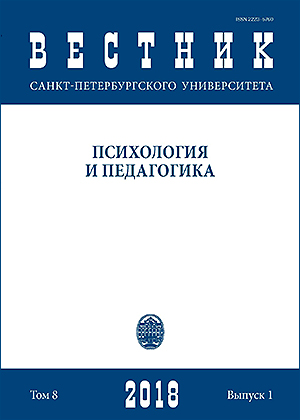Особенности физиологических механизмов когнитивных функций у больных шизофренией с различной фармакотерапией
DOI:
https://doi.org/10.21638/11701/spbu16.2018.106Аннотация
Изложены результаты исследования нейрофизиологических механизмов когнитивных функций, связанных с параметрами различных когнитивных стилей. В качестве испытуемых участвовали больные шизофренией с параноидными приступами и условно здоровые люди, имеющие различные когнитивные стили. Испытуемые также были поделены на группы, отличающиеся по приему различных видов нейролептиков. В качестве методов исследования кроме психологических методик на измерение когнитивных стилей были использованы методы оценки негативной симптоматики при шизофрении SANS. Для оценки нейрофизиологических механизмов когнитивных функций применялись вызванные потенциалы на различные стимулы, выстраиваемые в последовательности по закономерным и девиантным изменениям определенных параметров, задаваемых и не задаваемых для отслеживания в инструкции. Были выявлены изменения нейрофизиологических механизмов когнитивных функций, связанных с кратковременной памятью и работой гиппокампальных структур, обеспечивающих потенциацию синапсов нейронов в зависимости от когнитивных стилей и приема различных видов нейролептиков.
Ключевые слова:
прогнозирование, когнитивные стили, ЭЭГ, вызванные потенциалы мозга, фармакотерапия, типичные нейролептики, атипичные нейролептики, имплицитное научение, эксплицитное научение, нейровизуализация
Скачивания
Библиографические ссылки
http://doi.org/10.1027/02698803.21.34.204”
target=”_blank”>http://doi.org/10.1027/02698803.21.34.204
Hirayasu Y. et al. Auditory mismatch negativity in schizophrenia: topographic evaluation with a high‐ density recording montage. American Journal of Psychiatry, 1998, vol. 155, no. 9, pp. 1281–1284.
Загрузки
Опубликован
Как цитировать
Выпуск
Раздел
Лицензия
Статьи журнала «Вестник Санкт-Петербургского университета. Психология» находятся в открытом доступе и распространяются в соответствии с условиями Лицензионного Договора с Санкт-Петербургским государственным университетом, который бесплатно предоставляет авторам неограниченное распространение и самостоятельное архивирование.




